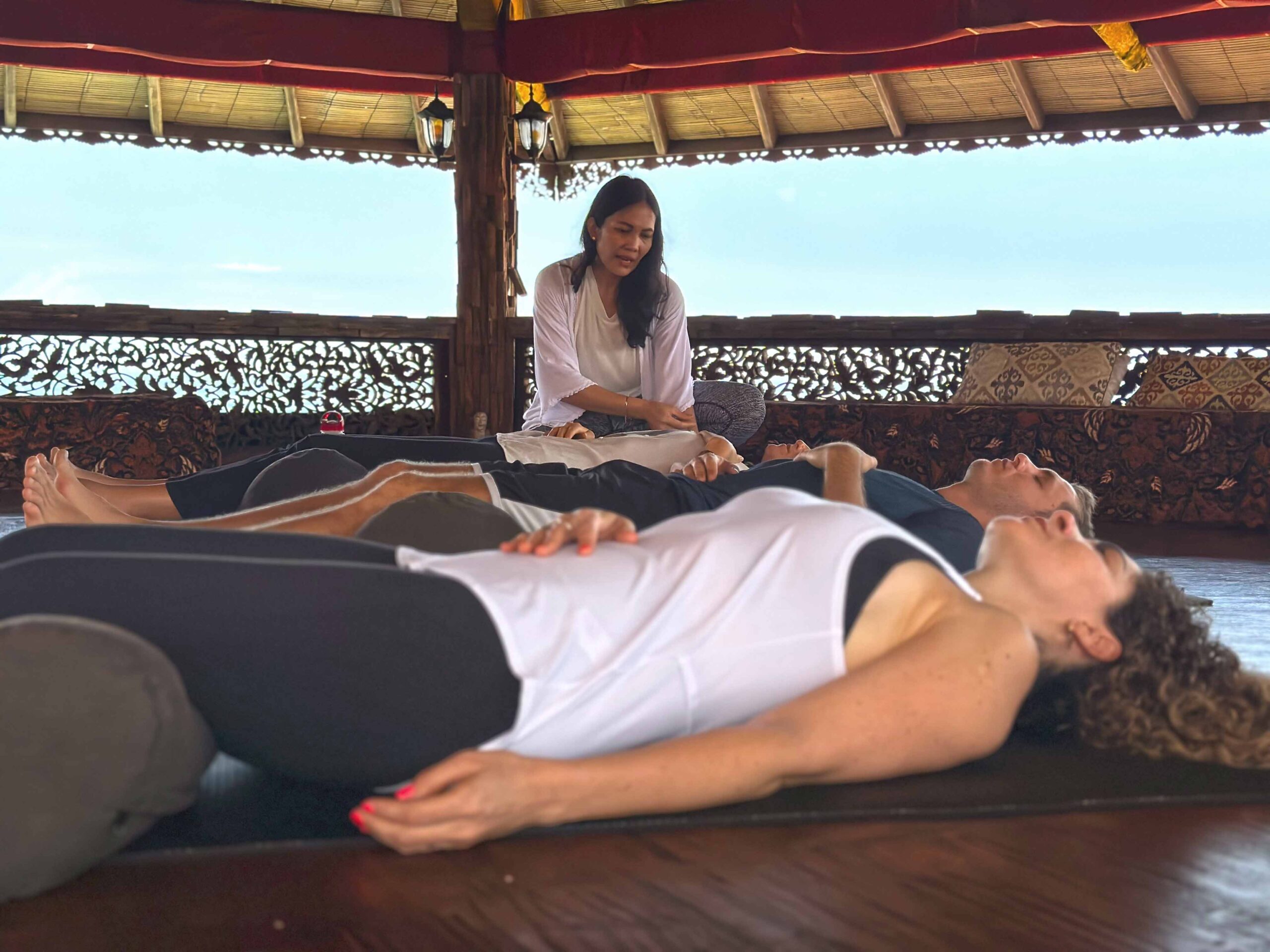By Gita Desyanti, yoga & breathwork teacher at Udara Bali

I was asked this question since there has been some hype around both lately, plus having both a Pranayama practice and a Breathwork practice, I thought I would share the difference from my experience and learning.
Pranayama are ancient breath techniques that originate from the yogic practices in India. It involves breath control with different styles and lengths, used to assess different emotional, mentally and physical states.
By controlling the 4 parts of the breath: the inhalation, the top of the breath, the exhalation and the bottom of the breath, the practitioner may get different benefits, from firing up / heating the body, cooling down, assessing a more grounded state, or relaxing, etc. Pranayama can be used either in a yoga practice or it can also be used as a stand alone practice. Based on the techniques and its benefits, pranayama can be used in the beginning, in the middle and / or at the end of a yoga practice, and/or while in a yoga pose.
Some popular pranayama practices are: Kapalbhati, or skull shining technique, which is practiced for energy clearing and its detoxifying effects in the body; Nadi Shodhana, or alternate nostril technique, is believed to center your mind by joining the right and left sides of the brain; Samavritti, is a ratio breathing technique that uses a set length of equal inhalations and exhalations to reduce mental chatter and distractions.
While breathwork is a conscious connected breathing with no pause between the inhalation and exhalation, it is used to strengthen our self awareness, encourage self healing, and reach spiritual, emotional and mental well-being. There are many different styles of breathwork and they have one aspect in common, which is taking much air into the lungs, so energy is moving in the body and releasing the exhalation rather than forcing or controlling the breath. The practice is facilitated by a certified Breathworker.
At Udara we offer varios styles of breathwork classes and events, such as Rebirthing Breathwork, a gentle form of breathwork through the nose to connect to our subconscious level and to release what have been suppressed and repressed; Shamanic Breathwork (there are many different methods of Shamanic Breathwork), which involves connecting with one’s highest self and exploring the depths of the psyche in a safe and sacred space; Quantum Breathwork, combining different dynamic breathing techniques to purify the energy, to release energy blockages, energize the body and to balance the nervous system; Breathwork for Trauma Release and Manifestation, combining different breathing techniques from yogic breathing and more modern breathwork types to release stored negative emotions and trauma and manifest desired life changes.
Both pranayama and breathwork have great effects on the nervous system and our mental and emotional states. Here is the difference between pranayama and breathwork for you to consider before starting the practice:
| Benefits | Pranayama | Breathwork |
| Regulate emotions | ||
| Promote relaxation and mindfulness | ||
| Improve breathing capacity and quality | ||
| Expand the energy flow in our energy channels | ||
| Connect to the subconscious mind | ||
| Remove limiting beliefs and release trauma | ||
| Access to inner wisdom and get clarity | ||
| Manifestation as we clear energies and mental blockages | ||
| Reach spiritual, mental and emotional wellbeing |
This separation enhances the readability and highlights the distinctions between the benefits of pranayama and breathwork.
Both are amazing practices that you can add to your regular movement and asana practices. Are you curious to try them? Have a look at our monthly schedule and our upcoming events.
